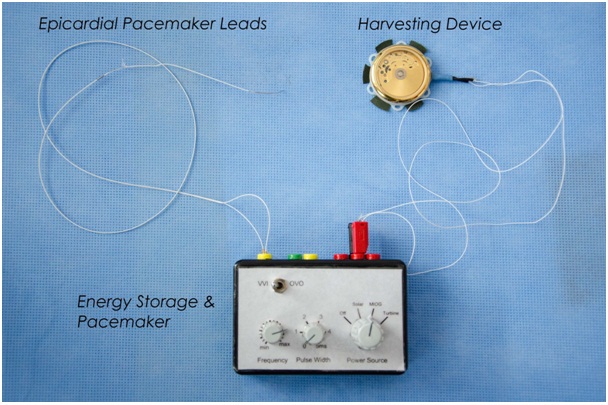Chinese scientists have developed a piezo-electric generator for pacemaker

Recently, a group of specialists from China published the results of their work on creating a piezoelectric generator for a pacemaker. The developers have already conducted tests on a pig, which implanted such a generator, previously connected to a cardiac pacemaker with extracted batteries.
Stimulator - a device that provides contraction of the heart in a certain mode. It generates electrical impulses that force the heart to contract, already unable to work without support.
Typically, stimulants are implanted into the patient's chest cavity, and the battery gadget works, which lasts for several years. After the charge ends, the patient has to undergo an operation, during which either the battery or the entire stimulator is changed.
')
Now there are other developments - for example, pacemakers that do not need batteries, they get current from the generators. One of the best generators is the heart itself, whose muscles are constantly moving.
Chinese scientists under the leadership of Hao Zhang (Hao Zhang) from the Second Military Medical University of China successfully tested. In its course, an implanted piezo-electric generator was able to power the pacemaker inside a living organism. The generator has a size of about three centimeters.
The frame fixture is made of polyethylene terephthalate. The shape of the stimulator, when viewed from the side, resembles the figure 8. The body material is elastic, so the generator can both shrink and return to its former shape. On both sides of the system, scientists placed composite piezoelectric strips, which consist of lead-based compounds. The strips are surrounded by films of chromium and gold, which play the role of electrodes.
The principle of the generator - the generation of electricity during deformation. Actually, this is how many piezoelectric generators work. The development of Chinese scientists produces electricity both when compressed and when it returns to its normal state.

First, scientists have created a prototype, then a system that can work without any problems in the laboratory. The final stage, which was already mentioned above, is the placement of the system inside a living organism, in this case, a pig.
The laboratory tested a very simplified prototype consisting of a tank with water with a generator inside. On the generator presses the piston with a compressible tip of the polymer. This whole system simulates the tissue on the outer surface of the heart.
When it turned out that the system works, the scientists conducted a series of experiments that showed that if you add another piezoelectric layer and connect them in a parallel circuit, the power increases more than two times, reaching 33 microwatts.

In the experiments it was decided to use a Yorkshire breed pig. A generator was attached to the animal’s heart by connecting it to a current rectifier. And then the entire system was hooked up to a pacemaker with the battery removed. During operation, the device was set at about 80 cuts per minute. In the same rhythm, the pig's heart also maintained, supported by a stimulator with current supply. Before the experiment, the frequency of strikes was 60-70 per second.
After the experiment, scientists checked the electrocardiogram readings, which made it possible to talk about successful experience.
By the way, devices of this type were created before. Back in 2014, a scientist by the name of Zürbuschen developed a pacemaker that works on the principle of the factory of ordinary mechanical wrist watches. The prototype was created in a few weeks and after checking its work, it turned out that the idea was quite working. Moreover, cardiac muscle contractions are also a tool for generating energy. The heart drives the pacemaker's mechanism, forcing the acting elements to rotate. Rotation, in turn, compresses the spring mechanism, which is reduced to a certain limit. Next, the spring spins, forcing to work a small generator of electricity.

It in turn accumulates in the battery and is used to maintain the pacemaker system, which leads to the correction of the heart muscle contraction rate.
Source: https://habr.com/ru/post/441382/
All Articles